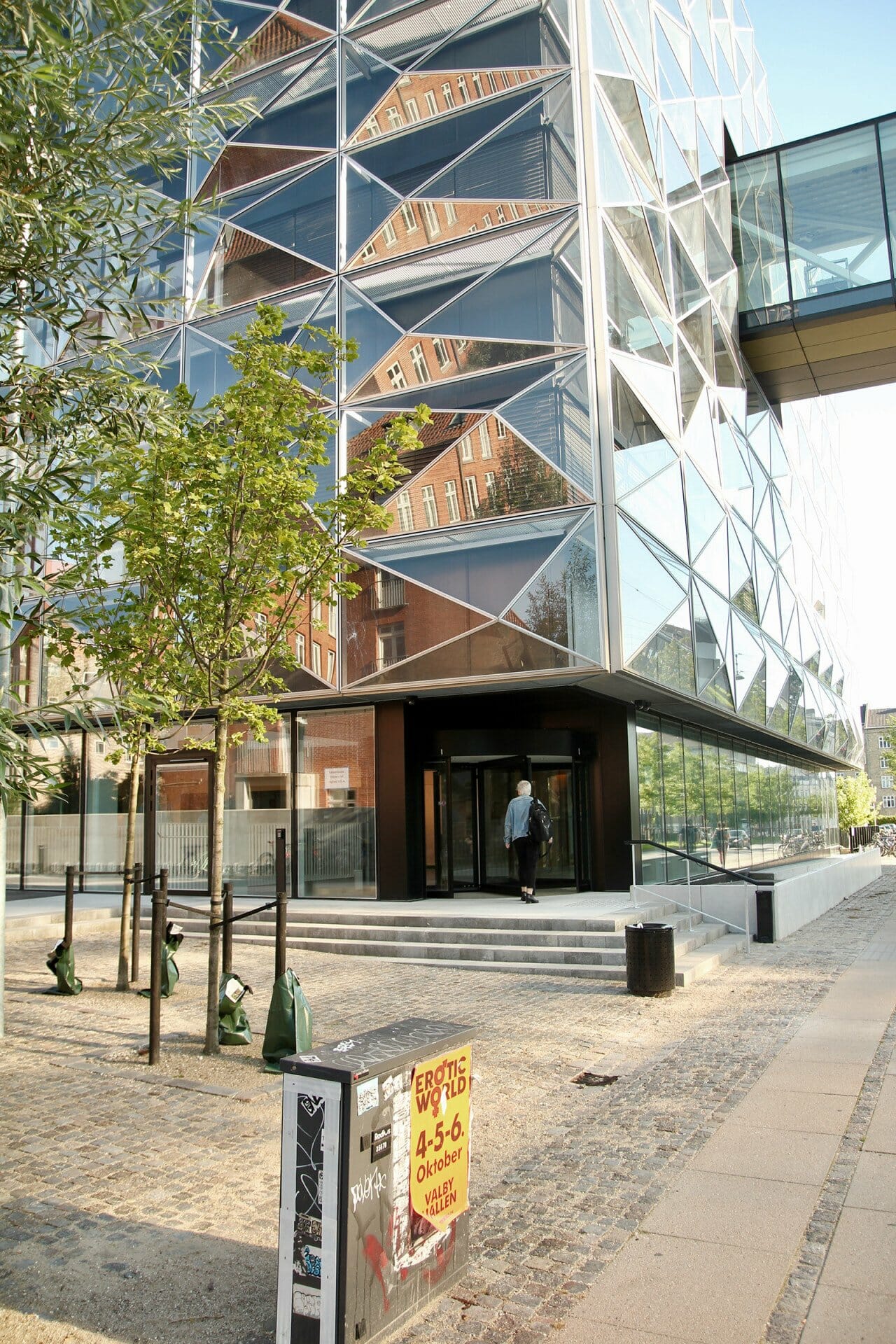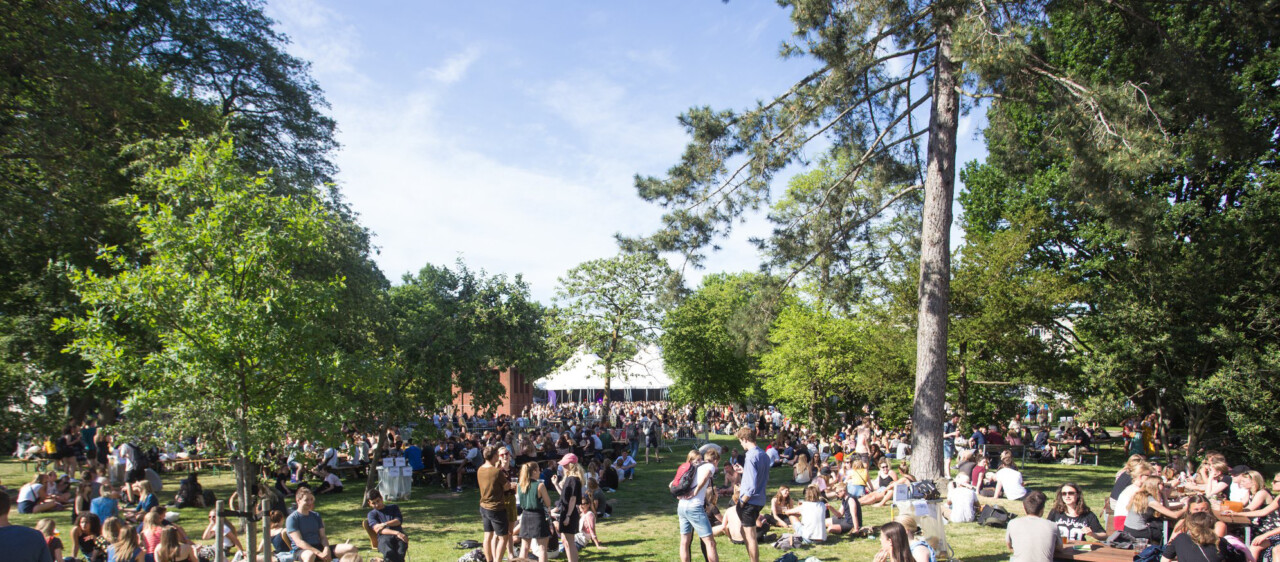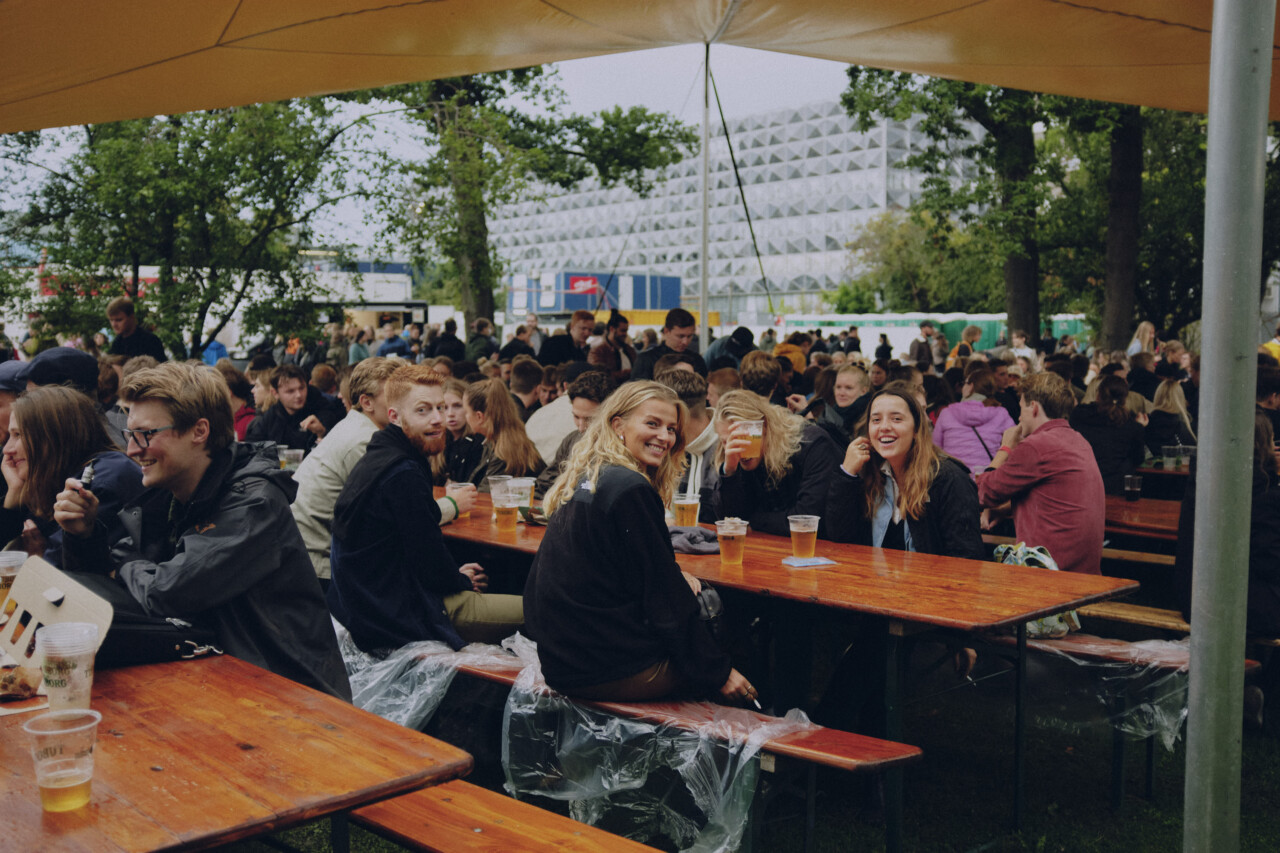Universitetsavisen
Nørregade 10
1165 København K
Tlf: 35 32 28 98 (mon-thurs)
E-mail: uni-avis@adm.ku.dk
—
Campus
Overview — The University of Copenhagen has four campuses. Here’s your guide to North Campus. Read about Friday bars, canteens, hiding spots and student life.
Welcome to the home of lab coats and liquids, the sciences favoured by gods, politicians, and research funds.
North Campus is actually split into three zones: South of Tagensvej, medics, dentists and their health science peers reign over the two conjoined Panum and Maersk Tower colossi. North of Tagensvej, in the triangle between Jagtvej and Nørre Allé, most of the natural and life sciences are housed in an architectural patchwork around Universitetsparken, the venue every year for the University of Copenhagen (UCPH)’s big annual celebration, the UCPH Festival. At the top of the triangle, there is another dose of health sciences in the form of pharmacy students.
And we haven’t even mentioned the scandal-ridden Niels Bohr Building, which was already supposed to have brought the physical, chemical, and mathematical sciences together back in 2016. After eight years of delays and a budget overspend of more than DKK 3 billion, the infamous building was finally inaugurated in October 2024. According to a student report from the site, the atmosphere in the building allegedly bears the marks of »a tragic backstory, but now with positive vibes«.
READ ALSO: Niels Bohr Building inaugurated by Danish King Frederik
How to find your way around: At Panum, the buildings are connected by a loooong two-storey hallway and numbered from 1 (the building with the dean’s office on Blegdamsvej) to 33 (the dentists’ building on Nørre Side Allé) — with some random numbers skipped along the way. The base of the Maersk Tower is referred to as building 3 in one place and building 13 in another, while the tower itself is called building 7. You’ll get the hang of it.
In the Tower, students only use the swanky auditoriums and the canteen at the bottom. The tower itself belongs to the researchers, although you can get off the lift on the upper floors and peer in through locked glass doors. But the 15th floor is open to the public, and for god’s sake treat yourself to a trip up there for the view over Copenhagen.
At the H.C. Ørsted Institute (known as HCØ), the old-school home of the natural sciences, everything branches out from the long hallway. The signage is excellent and accurate — except when students discover how easy it is to move some of the signs around. It gets VERY hot at HCØ in summer, hence the Danish nickname ‘HC-oven’ — and the security guards get grumpy if you open the fire doors to cool down, so make sure to bring a full water bottle.
Student counselling: North Campus is home to two different faculties: the Faculty of Health and Medical Sciences (abbreviated SUND in Danish) and the Faculty of Science (abbreviated SCIENCE in Danish). The Faculty of Health and Medical Sciences has a counselling office at Panum in room 23.1.03 and a satellite office further north in Universityparken in building 10. If you’re a Faculty of Science student, you’ll need to head to Frederiksberg Campus if you want in-person guidance.
North Campus
Home to around 12,000 students across two faculties, 18 bachelor’s programmes and 30 master’s programmes.
Reading rooms: The Department of Mathematical Sciences has a lovely reading room at the H.C. Ørsted Institute (which is in fact a building complex on campus and not an actual scientific institute), and the Copenhagen Biocenter on Ole Maaløes Vej offers plenty of good study spaces — but best of all is the library (University of Copenhagen Library North) by Tagensvej with 489 study spaces. At Panum, they’ve set up a beautifully refurbished reading room with sound locks. The old reading room is now a theory-only study space with specimen displays in glass cases. And then there’s the lab reading room, which you’ll only get access to if you have an agreement to poke around in organs.
Canteens: In the Universitetsparken vicinity there are canteens in the H.C. Ørsted Building, and there is the Pharmaceutical Canteen. The HCØ canteen food offering is okay-ish and it has a limited number of seats (the mathematicians have hogged the best tables) — but coffee is served before the first lecture. Here, you can get a small meal box for DKK 45, a large one for DKK 55, and if you want meat, that’ll cost you DKK 5 extra. The Biocenter canteen is better — and has excellent cakes — but the most beautiful and organic of all is the swanky canteen in the Maersk Tower. If you’re in a rush, rumour has it that its own satellite canteen has the shortest queue (though not without reason). The canteen in the Niels Bohr Building opened in 2024, and the University Post has yet to try it out.
READ ALSO: Offbeat locations at the University of Copenhagen
Coffee: There’s free coffee in the student club at Panum, the same goes for mBAR — and also at Cafeen?, if you’re a member (which costs about DKK 50 a year). You can also grab coffee for pocket change in most canteens — or try to charm your way into a research group and sneak a cup from their coffee machine. Speaking of which, researchers in the Maersk Tower have coffee taps. Like water taps. What more could you possibly want?
READ ALSO: Save more, live more: Student budget hacks for Copenhagen
Friday bars: The pharmacy students have their beloved freBAR, the bio crowd gravitates toward mBAR — which also throws a killer Oktoberfest — while the science students flock to Cafeen?, which stays open until 3 am — or, until the so-called ‘key holders’ have had enough (so it’s a good idea to buy them a beer or two). At Panum, the popular Student Club Friday Bar opens as early as 11 am (see the full list of student organisations at UCPH here). You generally need to be enrolled at the Faculty of Health and Medical Sciences to get in, but you can sometimes bring a friend — though not during semester start. If you really want to blend in, order a Shandy PB which is a soft drink–beer mix with four vodka shots in it. It has been off the menu for years — but it is finally back. Spoiler alert: it hits hard.
Dress code: You’ll find all kinds of fashion choices at North Campus — including the first 400 violations of the fashion police code. As one student put it: »No one bats an eye if you look like an idiot«. The actuarial mathematics students stand out with their corporate wear, the sports science crowd with more athletic gear (with an absurd level of activity to match).
Hiding spots: Find a quiet patch under a tree in the Universitetsparken. Pusterummet — an award-winning, student-run initiative at Panum — provides a space for students to relax, including a well-deserved nap after cramming up before something like ‘Anatomy’. Visit the rooms in the old part of Panum, 15.2.05 and 15.2.07, but remember to take off your shoes before entering, and don’t bring in any academic literature.
READ ALSO: Medical students help each other out with their stress
Uni-lingo: The H.C. Ørsted Institute (HCØ) becomes the ‘HC-oven’ when the air conditioning fails. Regulars at Cafeen? call it ‘home’. And the physicists’ homeroom is called ‘SPACE’ in Danish — get it?
Look forward to: The 69-hour bar at Panum on the last weekend of October — essentially 100 more or less insanely themed bars, overlapping and replacing one another non-stop for three days straight.
The first version of this article was written in Danish and published in 2018. It has been continually updated, with the latest Danish update on 25 August 2025. It has been translated into English and post-edited by Mike Young.



